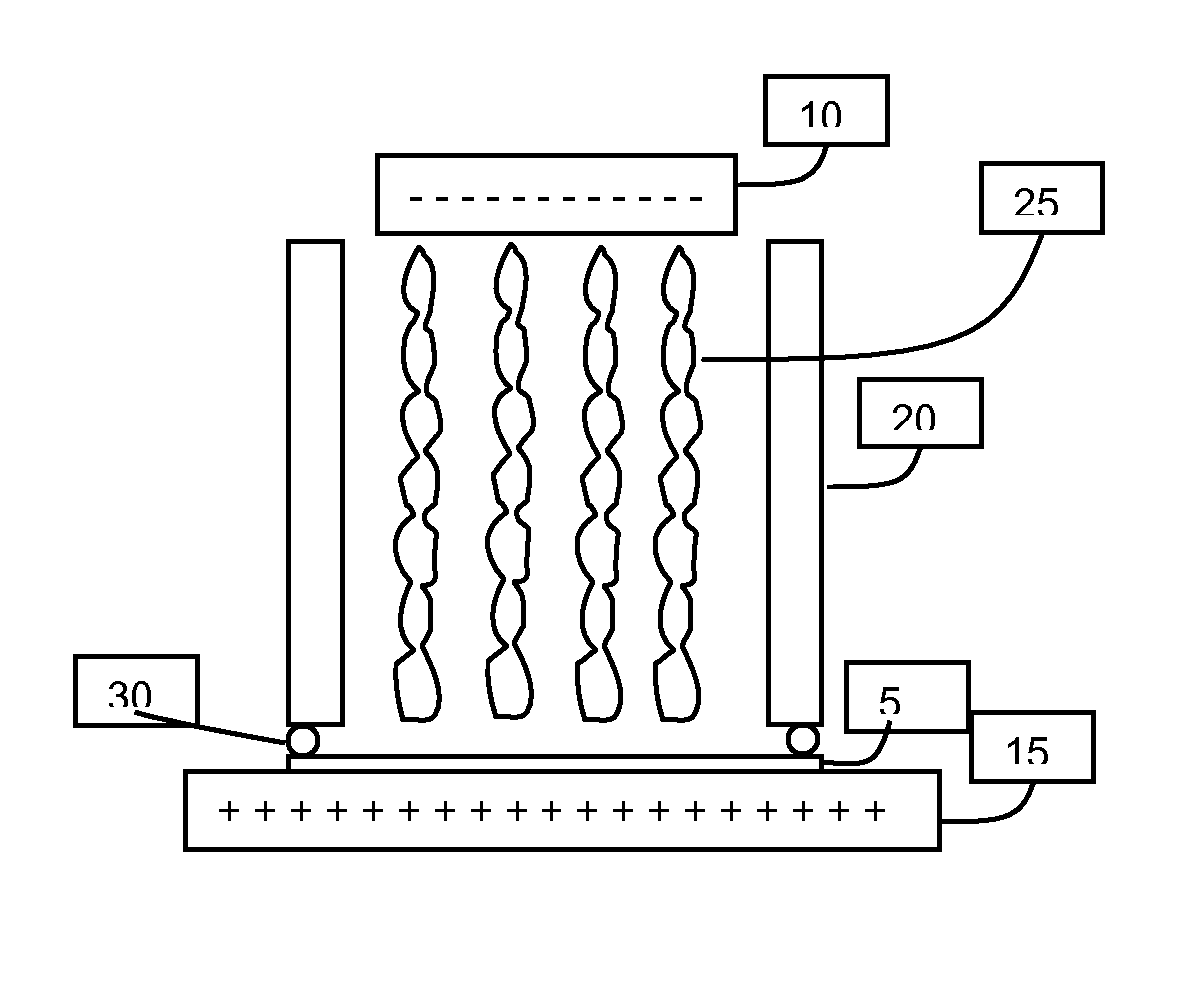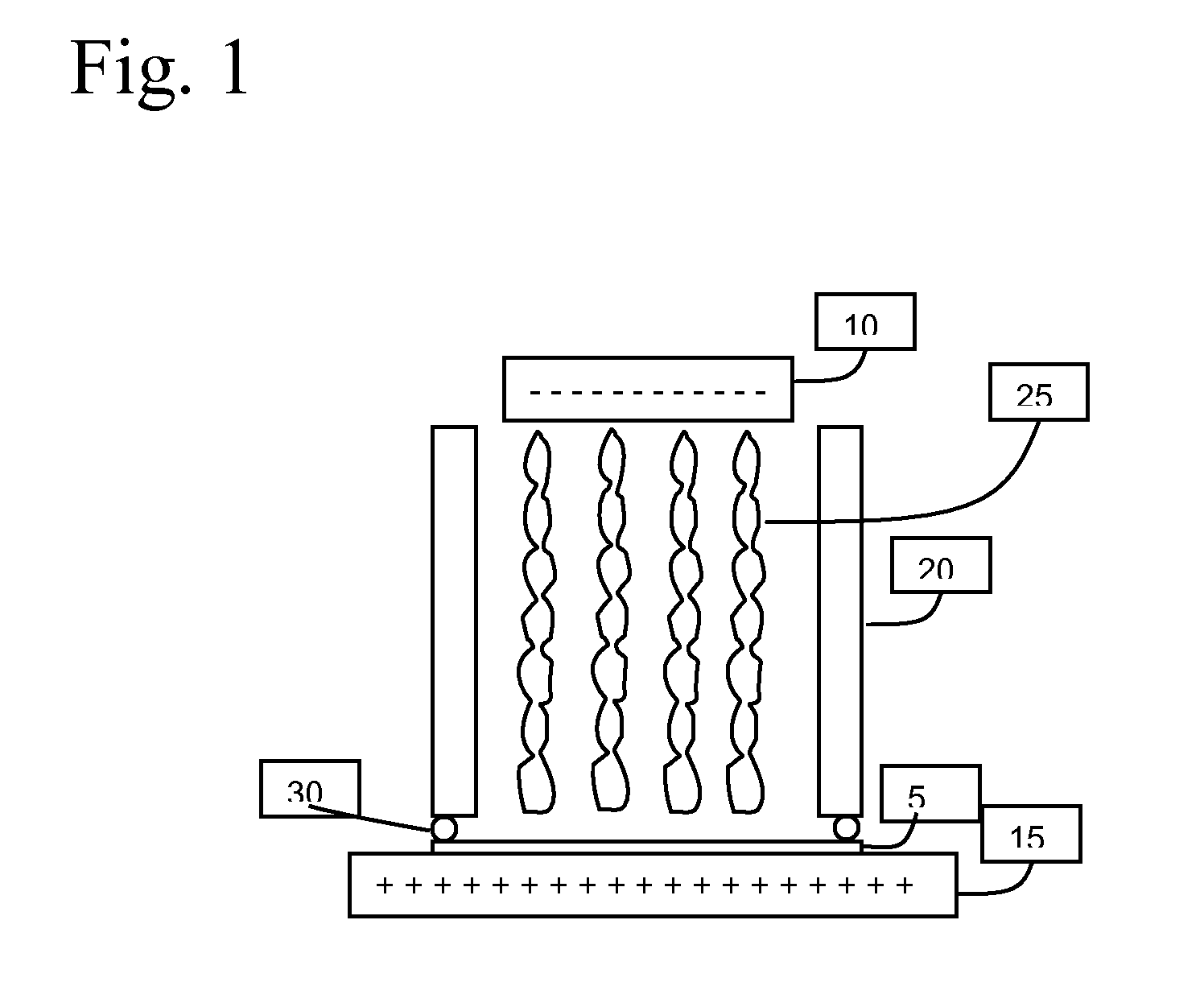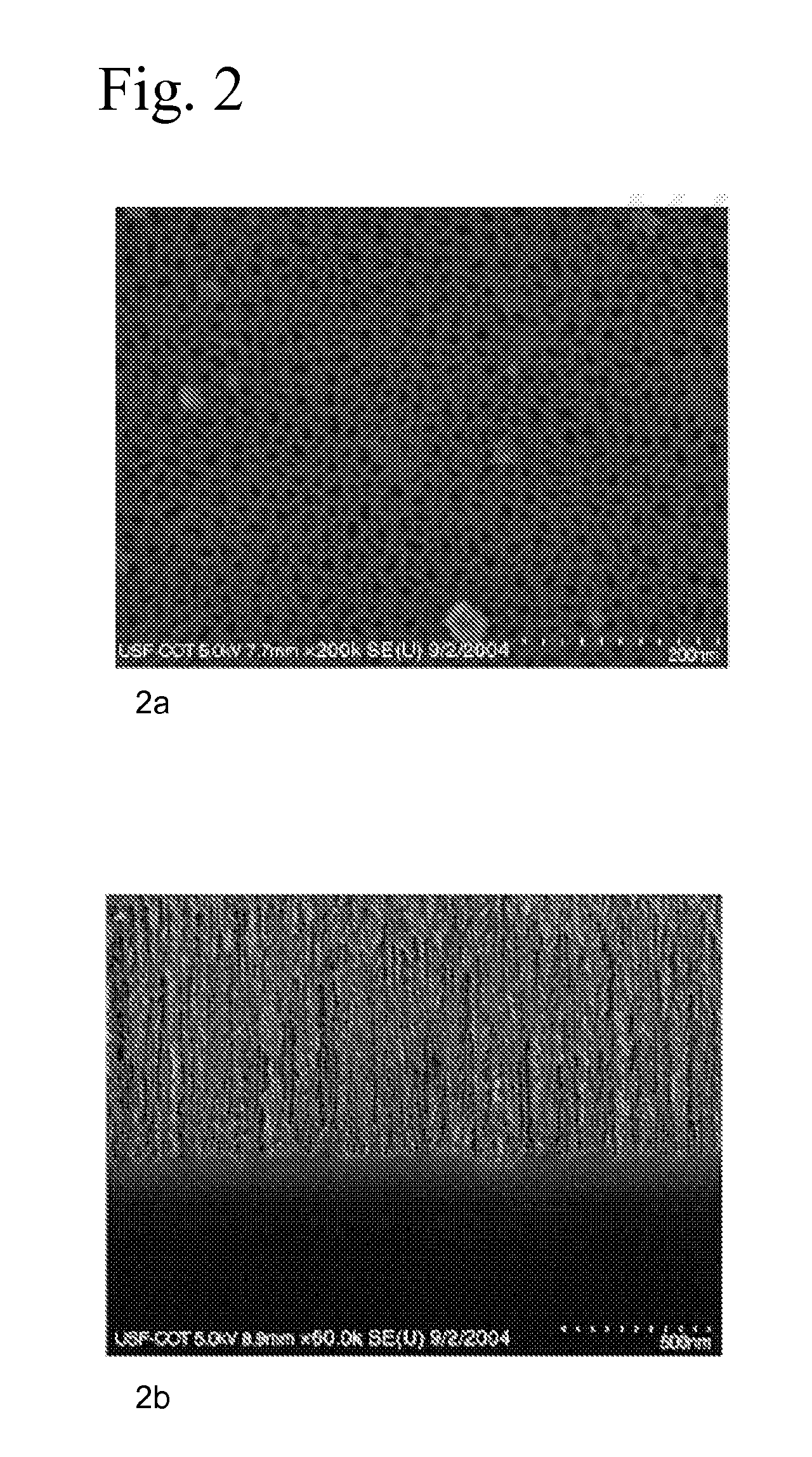Hydrogen Sensor
a technology of hydrogen sensor and sensor body, applied in the field of hydrogen sensor, can solve the problems of lack of sensitivity, large power requirement, lack of sensitivity needed, etc., and achieve the effect of reducing this impedance, high electrical impedance, and large surface to volume ratio
- Summary
- Abstract
- Description
- Claims
- Application Information
AI Technical Summary
Benefits of technology
Problems solved by technology
Method used
Image
Examples
Embodiment Construction
[0028] With reference to FIG. 1, in a particular embodiment, the porous silicon substrate 5 was fabricated from a p-type (1 0 0) silicon wafer of low resistivity (0.001-0.004Ω cm). The wafer 5 was anodized in an electrochemical etching solution 25 consisting of 24% HF / ethanol / H2O. The wafer 5 and platinum cathode 10 were placed in a Teflon jig, having sidewalls 20 and a rubber seal 30, as schematically illustrated in FIG. 1. The surfaces of the Si substrate 5 and Pt cathode 10 were kept parallel to each other and the current flow in the etchant 25 was normal to the wafer surface. The wafer 5 was etched at a current density of 25 mA / cm2 for an hour. The wafer was then removed from the etching bath, rinsed with water, and cleaned. This resulted in formation of an array of nanopores normal to the wafer, all being substantially parallel to each other.
[0029]FIG. 2 shows the (a) surface and (b) cross-sectional Scanning Electron Micrograph (SEM) of the wafer following the porous Si etchin...
PUM
 Login to View More
Login to View More Abstract
Description
Claims
Application Information
 Login to View More
Login to View More - R&D
- Intellectual Property
- Life Sciences
- Materials
- Tech Scout
- Unparalleled Data Quality
- Higher Quality Content
- 60% Fewer Hallucinations
Browse by: Latest US Patents, China's latest patents, Technical Efficacy Thesaurus, Application Domain, Technology Topic, Popular Technical Reports.
© 2025 PatSnap. All rights reserved.Legal|Privacy policy|Modern Slavery Act Transparency Statement|Sitemap|About US| Contact US: help@patsnap.com



